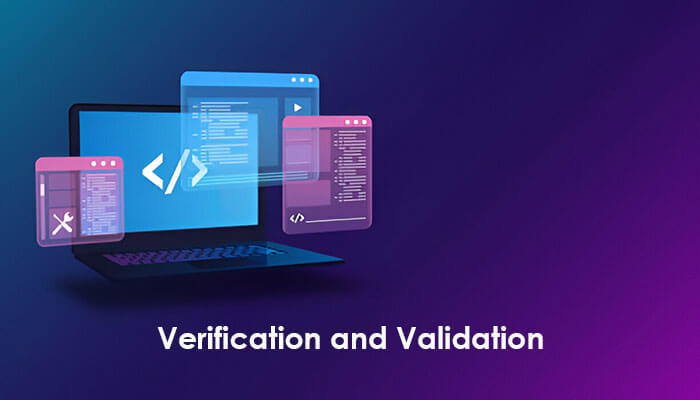To ensure that our products or system to meet the requirements and functions correctly, the verification and validation play a crucial role. Verification and validation are used in software engineering, system engineering and other fields.
Verification: The process of checking that the product was built as per the specifications and design.
- “Are we building the product right”.
- To ensure software correctly implements specific functions.
- Verification is a Static Testing.
- Verification includes Testing documents like Inspection, Code Review, and Walk-Through.
- It comes under Quality Assurance.
Validation: The process of checking whether the right product was built and whether it fulfills the user’s needs.
- “Are we building the right product”.
- To ensure software build is according to specific functions.
- Validation is a Dynamic Testing.
- Validation includes Functional Testing, Integration Testing, System Testing and User Acceptance Testing.
- It comes under Quality control.
Difference between Verification and Validation
| Verification | Validation | |
| Definition | It is a process of checking to see that the product meets the specific requirements. | It is a process to ensure that the product meets the specific requirements of the user. |
| Type of Testing | Static Testing | Dynamic Testing |
| Focus | Focus on internal aspects such as the design of the product (Checking documents like Inspection, Code Review, Walk Through). | Focus on End products ready to be Deployed (Functional and Non-functional Testing). |
| Targets | Product Specifications, software architecture, design, database design, etc. | Actual product |
| Sequence | Verification is Done then Validation follows | After Verification, Validation Starts |
| Error | To prevent Errors | To detect Errors |
| Teams | Quality Assurance team | The testing team along with Quality Assurance |
| Defect Range | Finds about 50 to 60% of defects | Finds about 20 to 30% of defects. |
| Check | Are we building the product, right? | Are we building the right product? |
Tools and Techniques – Software Engineering:

For Verification:
Inspection: It is a formal review. Inspection is done to detect Defects and Inconsistencies.
Code Review: The code review is a methodical process where a group of developers work together to analyze and check another developer’s code to detect errors, give suggestions, and confirm if the developed code is as per the standards.
Walk Through: It is used to review the documents with Peers, Managers and Team members by the author of the document to get feedback.
Unit Testing: Code testing of individual components or functions.
Integrated Testing: Testing the interaction in between the different components.
Performance Testing: Measure the performance characteristics of a system.
For Validation:
System Testing: It confirms that the product functions according to the end-to-end system specifications.
User Acceptance Testing: It invites a client to test the product and ensure that it meets their needs.
Beta Testing: Invite the group of end users to test the product and get feedback before the final release.
Field Testing: Testing the product in a real-time environment where it will be used.
Usability Testing: Identify the usability issue in real real-time environment through observing the end user.
Example:
Verification: Login into the system using username and password. Login needs to be done based on specific requirements documents. Is the screen appearing according to the specifications, checking the input fields.
Validations: Checking the functionality of Username and Password with different combinations like incorrect passwords, expired OTPs, expired accounts, etc.
Conclusion:
Verification ensures that the software is built correctly in the early stages of development and validation ensures that the final product meets the end user’s needs correctly. verification and validation are essential processes in software development to ensure the quality and reliability of the final product.



